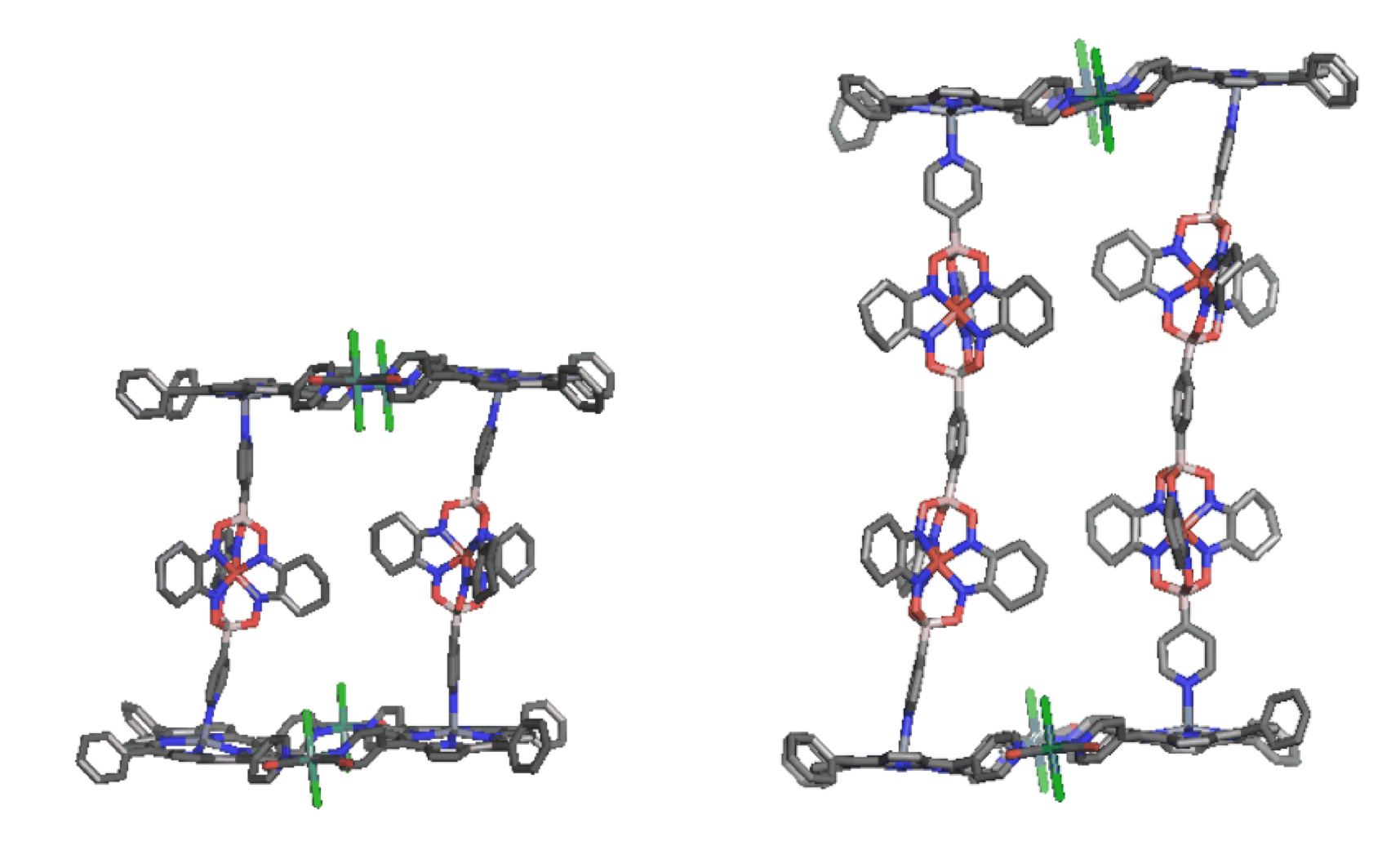Heterotrimetallic assemblies based on Zn(II)-porphyrin metallacycles and dipyridyl-capped Fe(II)-clathrochelate complexes.
In supramolecular coordination chemistry, metalloporphyrins and dipyridyl-capped clathrochelates are suitable and versatile building blocks for the construction of a variety of increasingly complex 2D and 3D metallosupramolecular architectures.1,2 Over the past few years, a modular strategy has been developed for the synthesis of multiporphyrinic discrete systems and coordination cages of different size and geometry based on pyridyl-capped clathrochelates.3,4
New multiporphyrinic discrete systems were obtained by self-assembly of Ru(II)-based metallacycles of Zn(II)-porphyrins, [trans, cis, cis-RuCl2(CO)2(Zn∙4'-cisDPyP)]2, and dipyridyl Fe(II)-clathrochelates of tunable length up to 3.2 nm. These heterotrimetallic assemblies, bearing two bridiging mono- and dinuclear clathrochelate ligands axially connected to the Zn(II)-metallacycles, were fully characterized by 1D and 2D NMR spectroscopy, including 1H DOSY analysis, and by X-ray crystallography. A preliminary investigation on the self-sorting behaviour of mixtures of different type of Fe(II)-clathrochelate ligands and Zn(II)-porphyrin metallacycle was performed by 1H NMR spectroscopy. A library of new 3D heterotrimetallic supramolecular systems with extended dimensions spanning 2.0 nm to 3.0 nm and increased number of metallic cores was assembled by separate combination of Zn(II)-metallacycles and dipyridyl Fe(II)-clathrochelate complexes. Introduction of these new discrete supramolecular assemblies looks promising for future potential application, due to their stability and the presence of metal-active centres and peripheral antenna units.

[1] E. Iengo, E. Zangrando, R. Minatel, E. Alessio, J. Am. Chem. Soc., 2002, 124, 1003–1013.
[2] M. D. Wise, A. Ruggi, M. Pascu, R. Scopelliti, K. Severin, Chem. Sci., 2013, 4, 1658-1662.
[3] E. Iengo, P. Cavigli, D. Milano, P. Tecilla, Inorganica Chim. Acta, 2014, 417, 59–78.
[4] G. Cecot, S. Jansze, M. D. Wise, K. O. Zhurov, T. K. Ronson, A. M. Castilla, A. Finelli, P. Pattison, E. Solari, R. Scopelliti, G. E. Zelinskii, A. V. Volgzhanina, Y. Z. Voloshin, J. R. Nitschke and K. Severin, J. Am. Chem. Soc., 2016, 138, 2046-2054.